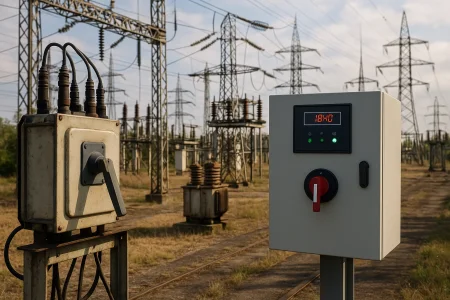
Modernizing ageing electrical networks requires more than replacing worn cables or outdated breakers. One critical upgrade lies in the transition from older manual switching methods to modern changeover systems. These devices ensure seamless transfer between multiple power sources, providing operational continuity and safeguarding sensitive electrical equipment.
When installed and configured correctly, a changeover can transform the reliability, safety, and efficiency of a facility’s power management. This upgrade not only improves the way electrical loads are supplied but also reinforces compliance with present-day safety regulations.
Understanding the Role of Changeover Switches
A changeover switch is an electrical instrument designed to shift the load supply from one source to another. In many facilities, this means moving from the primary utility connection to a standby generator or alternative supply.
Older systems often rely on manual intervention, which can result in delays, increased downtime, or unsafe back feeding.
Modern devices employ advanced sensing and control mechanisms. These allow the system to detect abnormalities in the main supply and execute a transfer in a controlled, safe manner. Whether deployed in industrial plants, commercial premises, or healthcare facilities, the functionality of these devices significantly enhances overall power resilience.
Limitations of Outdated Switching Systems
Upgrading is necessary because legacy systems present several operational and safety challenges:
- Extended downtime during switching. Manual systems require operator presence.
- Higher risk of operator error. Missteps can cause dangerous cross-connections.
- Limited monitoring capability. Older devices rarely track voltage or frequency variations.
- Inconsistent compliance with modern electrical codes. Safety standards have evolved.
Advantages of Modern Changeover Technology
Contemporary changeover solutions integrate advanced features to address these gaps. Their design focuses on improving reliability, protecting electrical devices, and optimizing operational control.
Key improvements include:
- Automated Operation: Eliminates manual intervention delays by employing sensors and controllers.
- Improved Safety Mechanisms: Electrical interlocks prevent simultaneous connection of multiple sources.
- Enhanced Monitoring: Built-in diagnostic indicators and alarms support proactive maintenance.
- Optimized Switching Speed: Rapid transfer reduces downtime to a minimum.
- Customizable Source Priority: Configurations can prioritize the most cost-effective or reliable supply.
Technical Features That Set Modern Systems Apart
When upgrading to modern changeover equipment, certain technical enhancements offer tangible benefits:
- Microprocessor-based control units for precise source management.
- Arc-resistant designs to protect operators during switching.
- High short-circuit withstand capacity for robust fault protection.
- IP-rated enclosures to safeguard internal devices from dust and moisture.
- Remote control capability for integration with building management systems.
Steps for Upgrading Existing Infrastructure
The process of incorporating modern changeover systems into an existing network requires a structured approach:
- Assess current load requirements
- Evaluate existing equipment condition
- Select the appropriate changeover type
- Verify compliance with electrical codes
- Plan installation downtime
- Train operators
Safety Considerations During Transition
Integrating a modern changeover system into an older network must prioritize safety. This includes:
- Proper earthing and bonding of all connected equipment.
- Use of correct cable sizing to handle expected loads.
- Incorporation of lockout/tagout procedures during installation.
- Labelling of source positions to guide operators.
- Testing and commissioning to verify smooth operation before full deployment.
Industries That Benefit Most from Upgrading
While modern changeover devices are beneficial across all sectors, certain industries experience exceptional gains:
- Healthcare
- Data Centers
- Manufacturing Plants
- Telecommunications
- Commercial Complexes
Collaborating with a Reputed Electrical Brand
While the choice of a modern changeover switch is critical, selecting the right partner for supply and installation is equally important. Collaborating with a reputed electrical brand ensures:
- Quality Assurance: Verified product testing and compliance with global standards.
- Expert Deployment: Trained engineers to install and commission the equipment.
- Ongoing Support: Access to spare parts, technical guidance, and timely service.
- Integration Expertise: Capability to incorporate the system into existing networks without unnecessary disruption.



